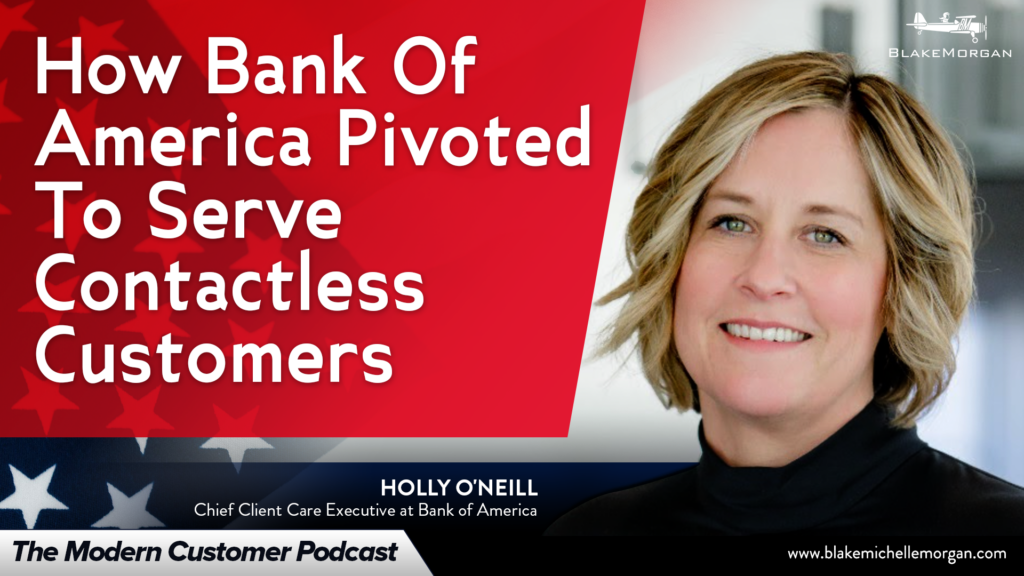For many people, the days of going to the bank to make a deposit or cash a check are gone forever. Like in many industries, the Covid-19 pandemic has led to a major shift away from in-person banking interactions towards digital services.
The challenge now becomes how to pivot to best serve contactless customers.
According to Holly O’Neill, Chief Client Care Executive at Bank of America, the switch to digital solutions was already in play for the company. The pandemic simply moved up the timeline.
Bank of America’s strategy has always been to deliver world-class service in a way that is convenient and easy both in person and virtually. That high-tech, high-touch approach was tailor-made for the current pandemic.
Covid increased the need for companies, including Bank of America, to undergo a digital transformation or speed up their timeline. O’Neill defines digital transformation as making things easy for clients by putting everything they need right at their fingertips. The goal is to make the mobile and online experience so intuitive that clients don’t need to go anywhere else because they have all the information they need right in front of them. And the ultimate goal is to have an experience that is so intuitive it answers questions before customers ask them.
With a banking digital transformation, financial centers serve as a hub for advice and guidance instead of transactions. Everything else, like making deposits and checking balances, can be done virtually.
Pivoting to reach contactless customers means understanding their needs and what they are really looking for. Bank of America leaned into its robust feedback program, which it rolled out a few years ago and has been crucial to understanding constantly changing customer needs.
Each year, Bank of America sends out tens of millions of customer surveys. That information is collected in almost real time and then sent to bank managers and the employees who are interacting with clients every day. Through a dashboard, these employees can daily changes in customer sentiment and feedback and then help customers in the most applicable ways. That feedback data is used to personalize the experience to give each customer exactly what matters to them, not to their neighbor.
O’Neill says the real winners will be the companies that customize the experience for their clients. That customization comes from leveraging feedback data to pivot and quickly make changes as needed.
The feedback data represents a wide range of customers, making it reliable and usable. Bank of America made a conscious effort to keep the surveys short and simple and deliver them through the mobile app, which has led to a high response rate.
Although the pandemic has brought a major pivot to serve contactless customers, the digital transformation is far from over. O’Neill views building out and improving digital solutions as a continued evolution that will forever be a part of Bank of America. And as it continues to listen to feedback, personalize and deliver seamless digital solutions, the bank will be prepared to meet customers’ needs, even long after the pandemic.
Blake Morgan is the bestselling author of The Customer of the Future. Sign up for her new course here.
For regular updates on customer experience, sign up for her weekly newsletter here.

